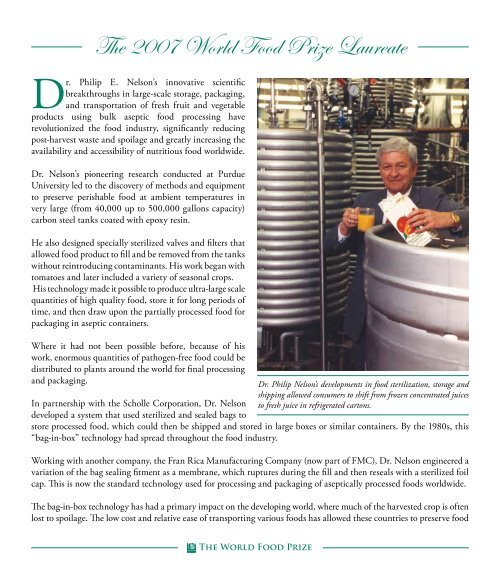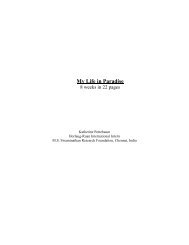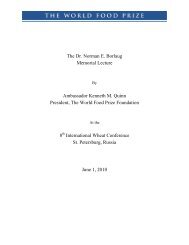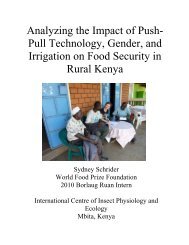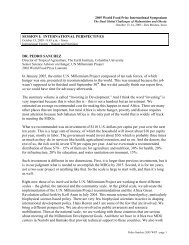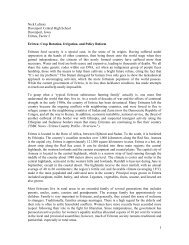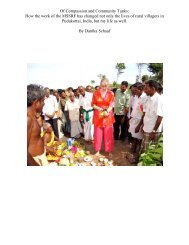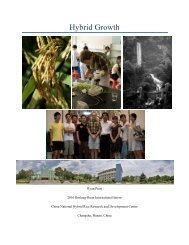Create successful ePaper yourself
Turn your PDF publications into a flip-book with our unique Google optimized e-Paper software.
<strong>The</strong> 2007 <strong>World</strong> <strong>Food</strong> <strong>Prize</strong> Laureate<br />
Dr. Philip E. Nelson’s innovative scientific<br />
breakthroughs in large-scale storage, packaging,<br />
and transportation of fresh fruit and vegetable<br />
products using bulk aseptic food processing have<br />
revolutionized the food industry, significantly reducing<br />
post-harvest waste and spoilage and greatly increasing the<br />
availability and accessibility of nutritious food worldwide.<br />
Dr. Nelson’s pioneering research conducted at Purdue<br />
University led to the discovery of methods and equipment<br />
to preserve perishable food at ambient temperatures in<br />
very large (from 40,000 up to 500,000 gallons capacity)<br />
carbon steel tanks coated with epoxy resin.<br />
He also designed specially sterilized valves and filters that<br />
allowed food product to fill and be removed from the tanks<br />
without reintroducing contaminants. His work began with<br />
tomatoes and later included a variety of seasonal crops.<br />
His technology made it possible to produce ultra-large scale<br />
quantities of high quality food, store it for long periods of<br />
time, and then draw upon the partially processed food for<br />
packaging in aseptic containers.<br />
Where it had not been possible before, because of his<br />
work, enormous quantities of pathogen-free food could be<br />
distributed to plants around the world for final processing<br />
and packaging.<br />
In partnership with the Scholle Corporation, Dr. Nelson<br />
developed a system that used sterilized and sealed bags to<br />
Dr. Philip Nelson’s developments in food sterilization, storage and<br />
shipping allowed consumers to shift from frozen concentrated juices<br />
to fresh juice in refrigerated cartons.<br />
store processed food, which could then be shipped and stored in large boxes or similar containers. By the 1980s, this<br />
“bag-in-box” technology had spread throughout the food industry.<br />
Working with another company, the Fran Rica Manufacturing Company (now part of FMC), Dr. Nelson engineered a<br />
variation of the bag sealing fitment as a membrane, which ruptures during the fill and then reseals with a sterilized foil<br />
cap. This is now the standard technology used for processing and packaging of aseptically processed foods worldwide.<br />
<strong>The</strong> bag-in-box technology has had a primary impact on the developing world, where much of the harvested crop is often<br />
lost to spoilage. <strong>The</strong> low cost and relative ease of transporting various foods has allowed these countries to preserve food<br />
<strong>The</strong> <strong>World</strong> <strong>Food</strong> <strong>Prize</strong>


